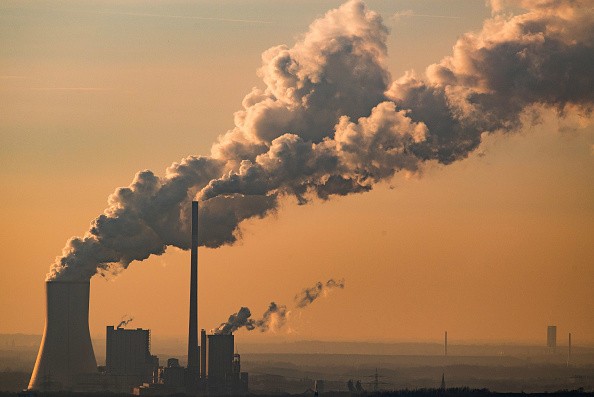Two of the scientists who discovered that 2018 finding says in an article published in the journal Science that if our greenhouse gases continue unchecked, warmer oceans and oxygen depletion at sea might lead to mass extinction on par with the planet's five deadliest disasters. They believe it is large enough to wipe out most species diversity since the end-Cretaceous catastrophe 65 million years ago that wiped out the dinosaurs.

However, the experts believe that we can change this course. Rapidly reducing emissions might cut extinction risks by 70%. Combining greenhouse gas reductions with coordinated measures to address ocean pollution, overfishing, habitat destruction, and other marine pressures would provide ocean life with a greater chance of long-term survival.
"Even if we drastically reduce our emissions, we might lose about 5% of marine species," says co-author Curtis Deutsch, a climate scientist at Princeton University. "A 10% loss might be seen at 2 degrees [Celsius] of warming. There will be a shift in the general community of species in most areas. However, they are insignificant numbers. We'd be saving the world from extinction."
A Ray of Hope
Denise Breitburg, an ocean oxygen specialist at the Smithsonian Environmental Research Center who was not involved in the study, considers the findings "stark yet essential," adding that they provide "a foundation for optimism" that "much of the ocean's life may be preserved."
"This article crystallized the options in front of us," says Malin Pinsky, an ocean scientist at Rutgers University in New Jersey and co-author of an editorial piece published with the study. "This feels like a once-in-a-lifetime opportunity to protect the planet's future life."
The current study by Deutsch and primary author Justin Penn, an associate research fellow at Princeton, focuses on how rising sea temperatures affect oxygen levels and how marine life uses that oxygen.
Modern Research

In the last 15 years, new research has revealed that natural low-oxygen zones in the ocean are fast spreading but unevenly, forcing much of the marine life to a tighter band of oxygen-rich water near the top. Since the 1960s, deoxygenated areas ranging from the Bay of Bengal to a stretch of the Atlantic off the coast of West Africa to vast swaths of the eastern Pacific have increased by over 1.7 million square miles. They are rising at a rate of up to three feet per year. In certain spots off the coast of southern California, oxygen levels have decreased by about a third in the last quarter century. Since the middle of the past century, the amount of seawater devoid of oxygen has grown fourfold.
This development is already wreaking havoc on marine life, limiting habitat for some species while concentrating prey for others. Billfish like marlin and sailfish are cutting their dives for feeding by hundreds of feet. Sharks, tunas, Pacific cod, herring, and mackerel, among others, are clustering near the surface, making it simpler for fishing fleets-or birds and sea turtles-to catch them.
Other Changes
There are additional changes, some of which are strange. Low oxygen levels make it difficult for some crabs and squid to see. Many microscopic zooplankton, which provides food for bigger marine species, are already nearing the end of their oxygen tolerance and will likely die if oxygen levels continue to fall. Low oxygen levels limit fish reproduction and promote illness in others.
Respiration is the most major alteration. The more oxygen organisms require to meet their energetic demands as the temperature rises. However, this occurs when the ocean's oxygen supply decreases.
Unabated greenhouse gas emissions, he and Deutsch conclude, will put the Earth on track for an end-Permian-level mass extinction by the year 2300. While such a scenario is unlikely-the advent of solar and wind power is predicted to reduce fossil fuel demand slowly-the lessons learned are still applicable. Even if the future looks brighter, the exact mechanisms that wiped out sea life 252 million years ago are still at work. (Previous factors like global cooling and asteroid strikes contributed to the other four major extinctions.)
The critical point, according to Deutsch, is that these species' declines are predicted. "It's a straight change," he explains. Species extinctions increase by a few percentage points for every half-degree Celsius increase in temperature.
Related Article : One of the World Largest Mass Extinctions May Have Been Triggered by Volcanic Winter
For similar news, don't forget to follow Nature World News!
© 2025 NatureWorldNews.com All rights reserved. Do not reproduce without permission.





